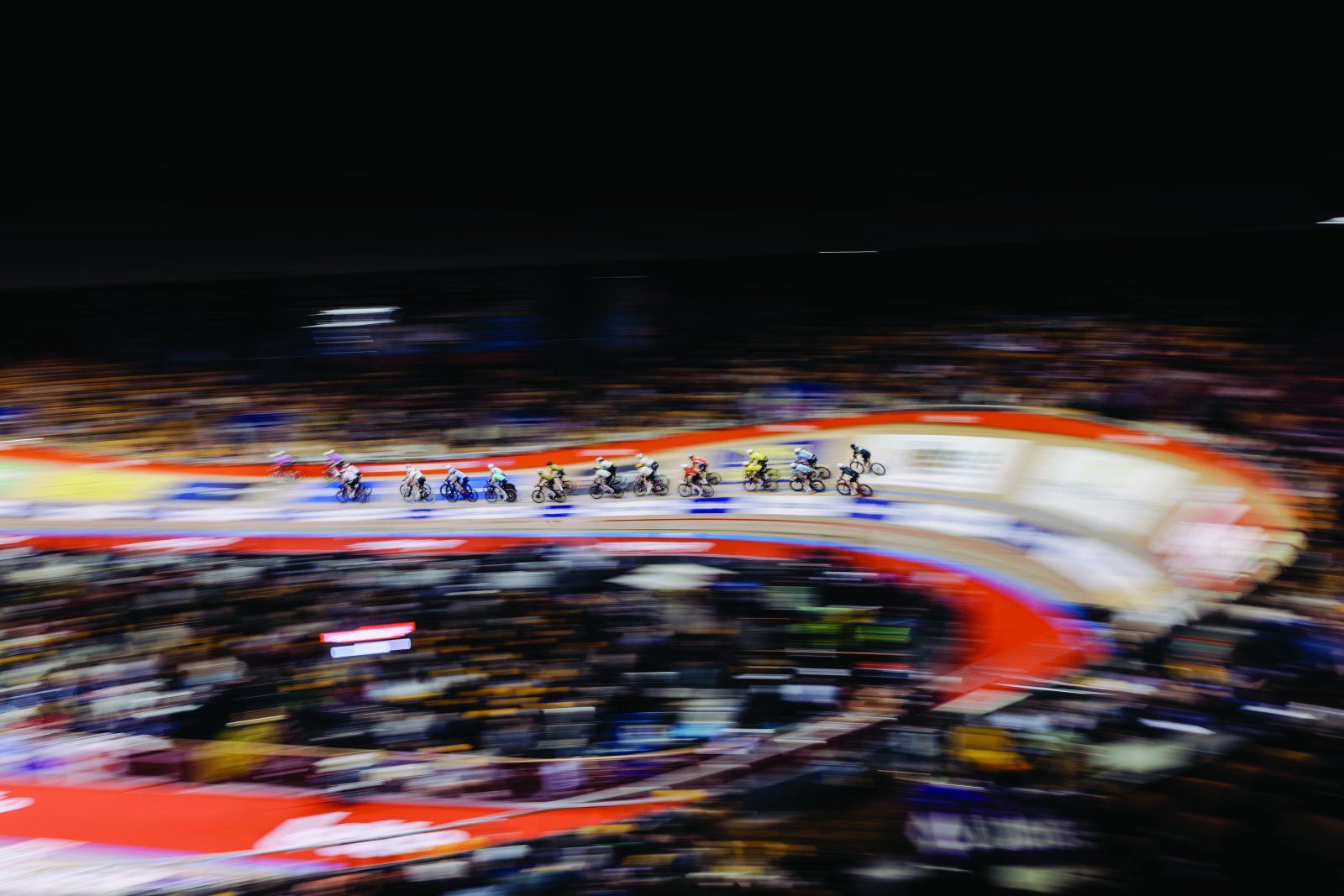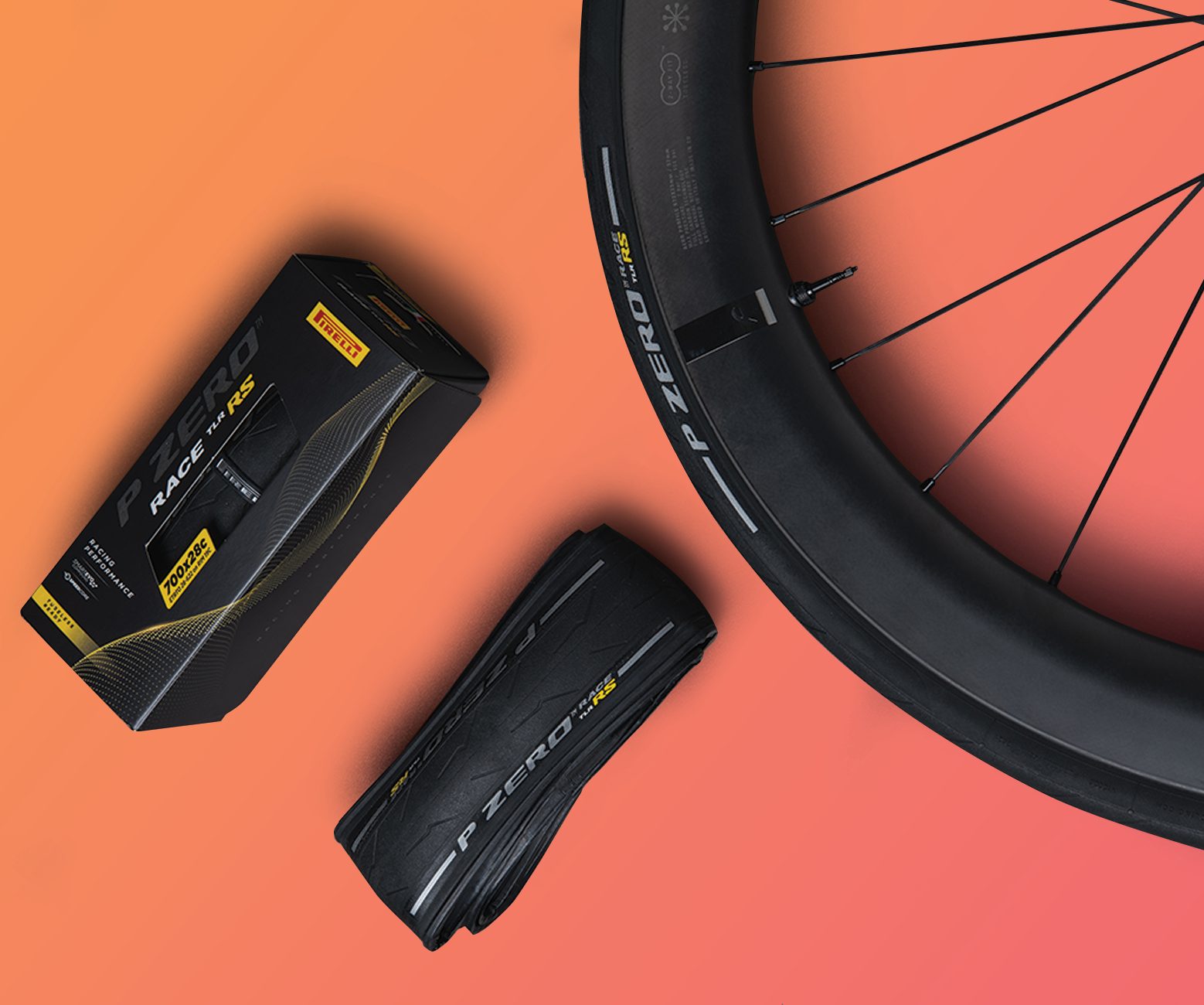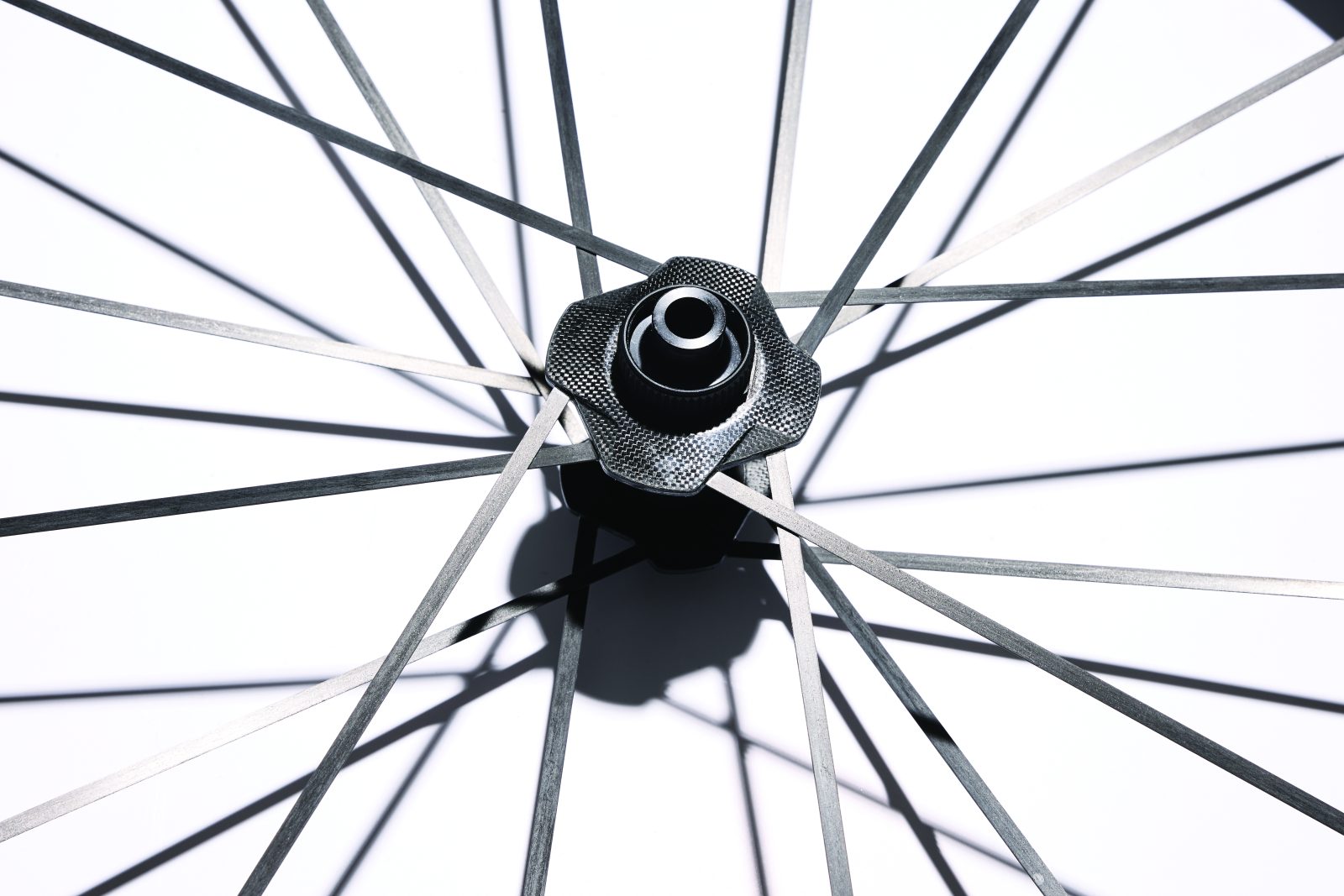Track racing may not be your thing, but the Six Days of Ghent is an event that every cycling fan should experience at least once. Even if you don’t watch the race

Words NICK CHRISTIAN Photography KEVIN FAINGNAERT
A little-known fact about Ghent in Belgium is that it has two cathedrals.
The elder is St Baafskathedraal, which dates back to 932AD and is home to a 15th century masterpiece by brothers Jan and Hubert van Eyck entitled ‘The Adoration of the Mystic Lamb’.
The younger is a 25-minute walk through the student district, just a stone’s throw from the train station.
First consecrated in the 1920s, its original structure was destroyed by fire in 1962, rebuilt and reopened in 1965.
This place of worship is called ’t Kuipke and it’s home to the modern masterpiece known as the Six Days of Ghent.
Though the website of the town’s tourist board proclaims it to be ‘Mecca for cycling fans’, from the outside ’t Kuipke has little to reward the many who make the pilgrimage from cycling heartlands such as France, Italy, Spain and, more recently, the UK and even further afield.
Visually it is an unassuming, leisure centre-like concrete edifice, nestled at the heart of Ghent’s Citadelpark.
On a sodden Saturday afternoon in mid-November, there are few hints of what is set to unfold within its walls over the next eight hours.
Make it inside, however, and that perception transforms. Perhaps not instantly, because to get to the arena you have to make it past the decidedly un-Christmassy market stalls.
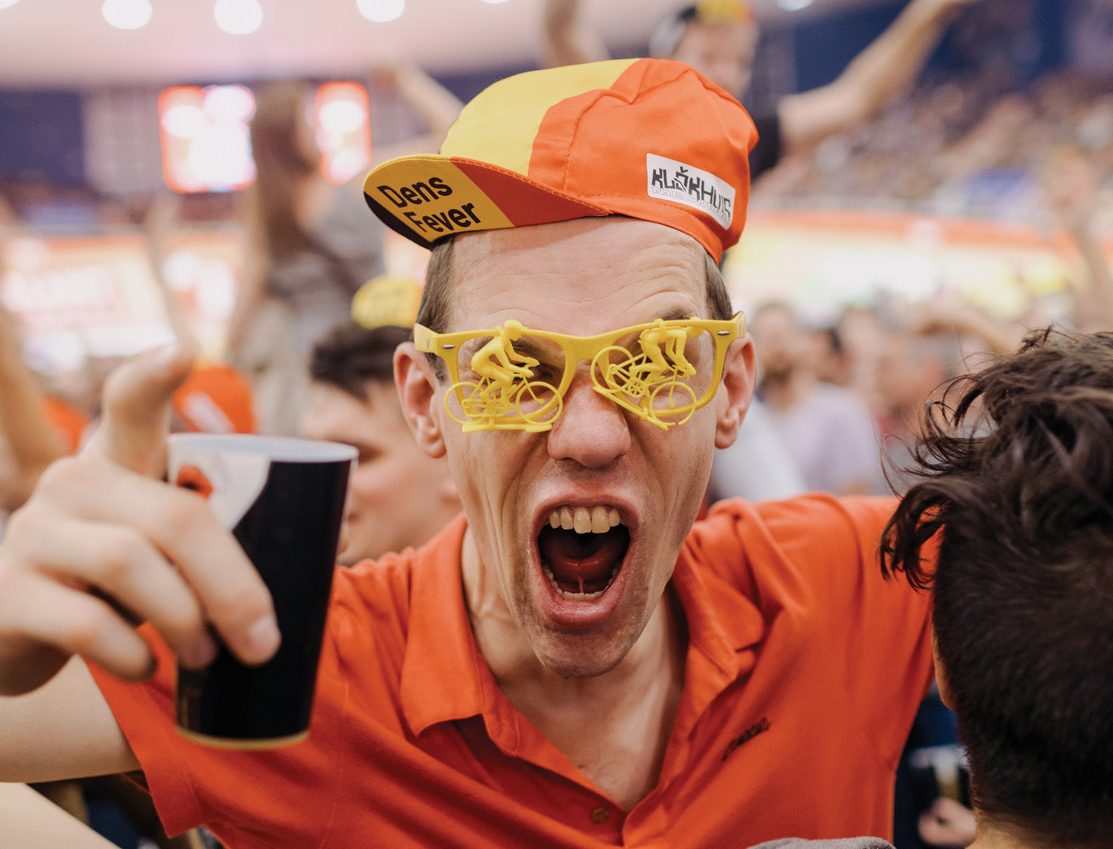
Beer is in abundance, naturally. If the walls were to collapse the ceiling would surely be propped up by stacks of 50-litre kegs.
To line your stomach you can have either meat with your chips, or dairy, but you’re likely to be given one drowning in the other.
Souvenirs are plentiful, for a price. Care to acquire a postcard featuring the pixelated face of a rider?
That’ll be €4 please. Apparently, cyclists’ image rights aren’t guarded as carefully as those of other top athletes.
The stall selling Belgian national cycling jerseys – the sport’s classiest kit – does a roaring trade.
Part of the allure is summed up by cycling fan Richard Swann, who has travelled over from London and whom Cyclist quizzes while standing in a queue for snacks: ‘The decor, the tiredness of the building,’ he says, ‘it’s like going back to the 1970s or ’80s, but that’s what makes it cool.’
History in the woodwork
Having negotiated the myriad distractions, you head up the steps to the 3,000 plastic seats that encircle the track.
Alternatively, you can make your way down one of the flights at either end, before emerging in track centre.
Whichever path you choose you’ll experience something spine-tingling. Even when empty, these Siberian pine boards echo with history.
This is where Eddy Merckx and Patrick Sercu beat Tom Simpson and Peter Post on that first phoenix-from-the-ashes edition of 1965; where Sercu won with Jean-Pierre ‘Jempi’ Monsere in 1970, and Roger De Vlaeminck in 1971.
Sercu’s reign here lasted the better part of two decades, only drawing to a close in 1982.
The honour roll is mostly Belgian, with a smattering of Dutch, Danes and Swiss, plus the odd Italian.
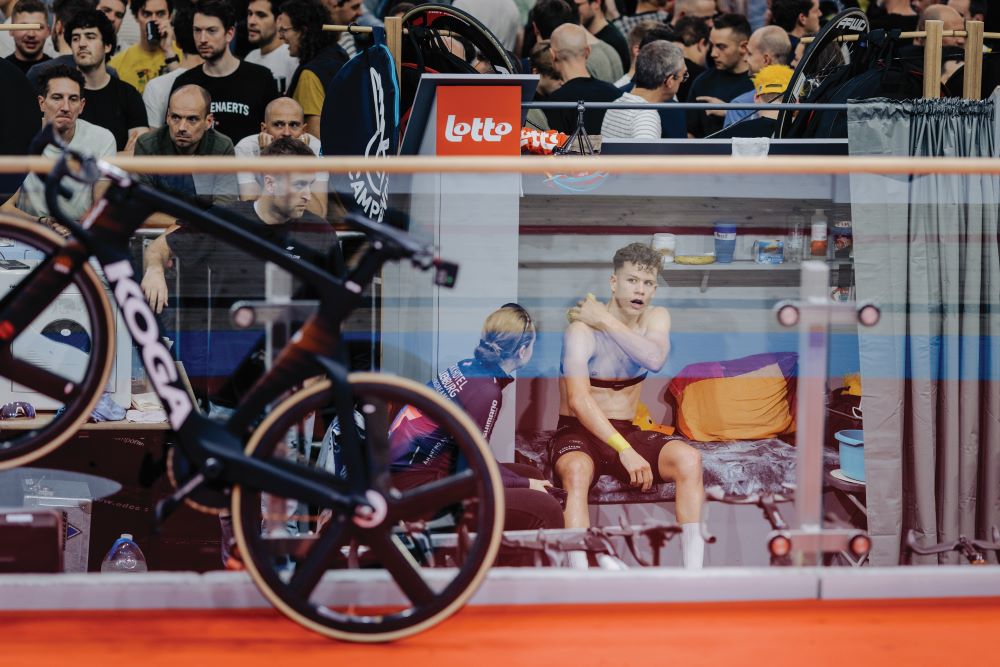
Tony Doyle, a Brit who sadly died last April, was first to take the title back across the Channel to the UK in 1986.
Doyle and Danny Clark, an Australian from Tassie, beat Belgian’s Etienne De Wilde and Stan Tourné.
Doyle would team up with De Wilde to win his second ’t Kuipke victory five years later. The ‘and’s are everything in this game.
Although road cycling calls itself a team sport, there’s only one rider who matters on the Champs-Élysées or in Roubaix.
But here, there is no more equal a partnership in cycling than the Madison, embodied by the handsling that brings one rider into the action in place of the other.
The career-long closeness of Bradley Wiggins and Mark Cavendish culminated in the pair sharing Wiggins’ final two-wheeled title here in 2016.
The most recent local hero, idolised by Flandriens at least as much as the Van Eycks, is Iljo Keisse, whose solid career on the road was easily eclipsed by his achievements on this oval.
Keisse, born and raised in Ghent, whose dad still owns a bar round the corner that is reputed to host the best afterparty in town, ‘was really kind of a god during the last decade of the Six Day’, says Christophe Impens, managing director of Golazo Sports, the company that owns and organises the event.
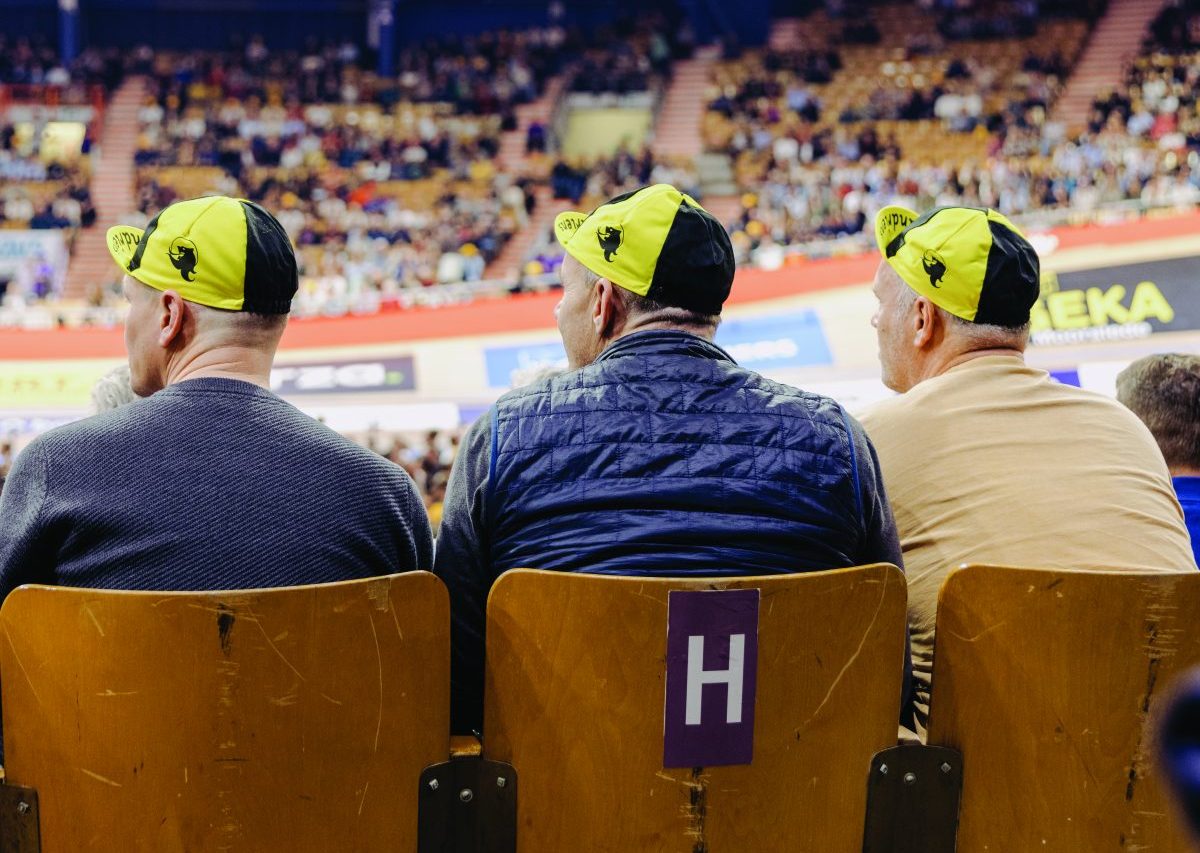
The 2023 edition is the first since Keisse’s retirement and the organisers ‘were a bit curious how it would work out without the local hero’.
Any concerns were put to bed when the box office opened: ‘We had six days completely sold out,’ Impens tells Cyclist. ‘6,000 people each night.’
Getting us underway
Before the big boys take to the stage we have the warm-up acts in the form of the under-23s or beloften (Dutch for ‘promises’).
Keeping a close eye on four from the British Cycling stable are coaches Stuart Blunt and Matt Brammeier.
Riders Finlay Tarling and Sam Fisher are going well, but 17-year-olds Elliott Rowe and Will Salter are the only riders challenging the Danish duo of Albert Holm (son of legendary sports director Brian) and Peter Bheki Laursen.
Brammeier observes silently while Blunt calls out occasional words of advice as his riders pass by: ‘Elliot, you’ve got to be on the Danes, mate.’
Rowe and Salter are very much ‘on the Danes’ and are, in fact, the only riders not to have lost a lap to the older riders. After 150 laps they’ll ultimately finish second on points.
Cyclist asks Blunt if he is pleased with that result. ‘I’m happy they’re still in one piece,’ he replies. It’s understandable.
Part of what makes the Six Days of Ghent a unique experience for riders and spectators alike are ’t Kuipke’s physical attributes.
These days most elite indoor racing takes place on 250m velodromes, with the angle of the banking around the 40° mark.
The ’t Kuipke track is 166m long with bends pitching over 50°. There is very little space for cycling.
That only serves to test the riders’ skills to the max, concentrating the racing to such an extent that comparing an Olympic or World Championship Madison to the Ghent Six is like comparing Budweiser to a Trappist Tripel.
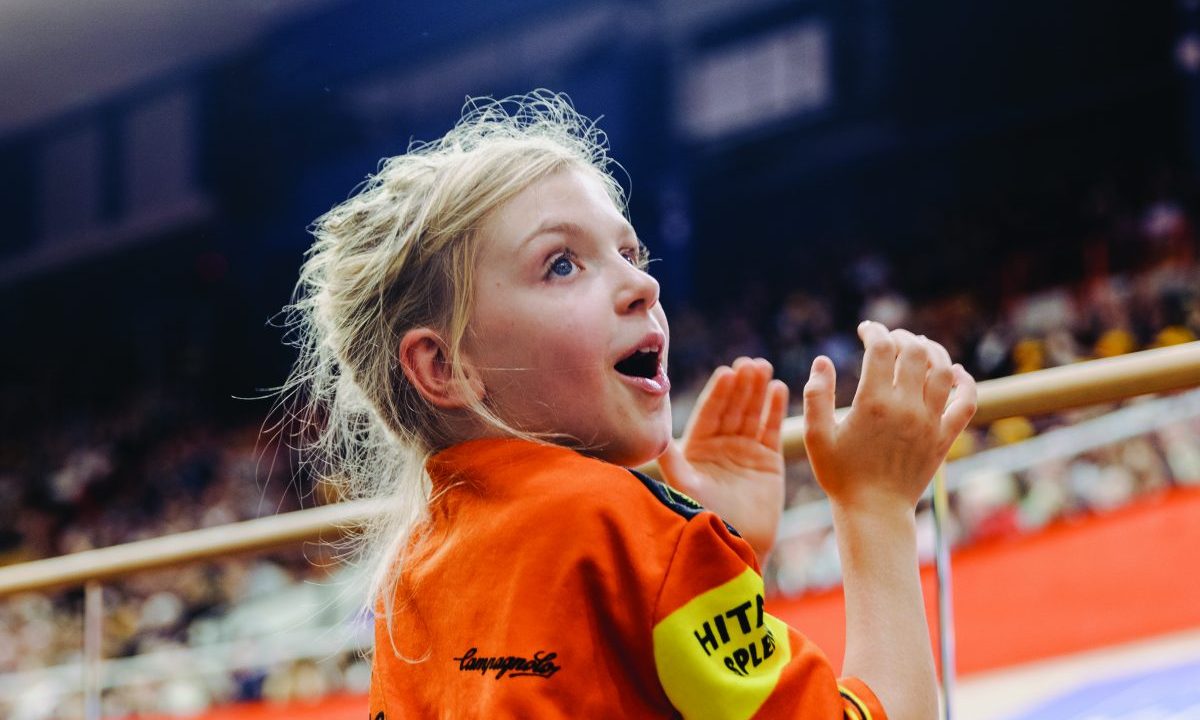
Again, Richard Swann from London sums it up: ‘I was at the more “glitzy” UCI Track Champions League in London last weekend, and it’s almost like two different sports.
I don’t know how the riders do it, or how there aren’t more crashes.’ ‘Intense’ is the word he settles on to best describe the racing at Ghent.
‘Dangerous’ is the one offered by Frenchman Oscar Nilsson-Julien, one of the elite male riders who is making his debut in the main event this year. ‘I raced the under-23s four years ago,’ he says.
‘I remember leaving and thinking, “I never want to come back, it’s so sketchy.”’
Back he has come all the same, in the company of new partner Valentin Tabellion from France (Nilsson-Julien, who previously represented Great Britain, took up an offer from France to switch his sporting nationality earlier this year in order to give himself a better chance of taking part in the Olympics).
As the newest of newbies, the pair know their place.
‘It’s a lot to do with respect,’ Nilsson-Julien says, ‘because here it’s a lot about placement, and if you’re younger you respect the World or the Olympic Champs, let them stay a bit further forward.
It goes around and comes around, though, so they respect us too. Especially after yesterday.’
The 21-year-old is referring to the Friday night chase, the biggest race of the week, which they won by a massive two laps over last year’s overall winners Robbe Ghys and Lindsay De Vylder.
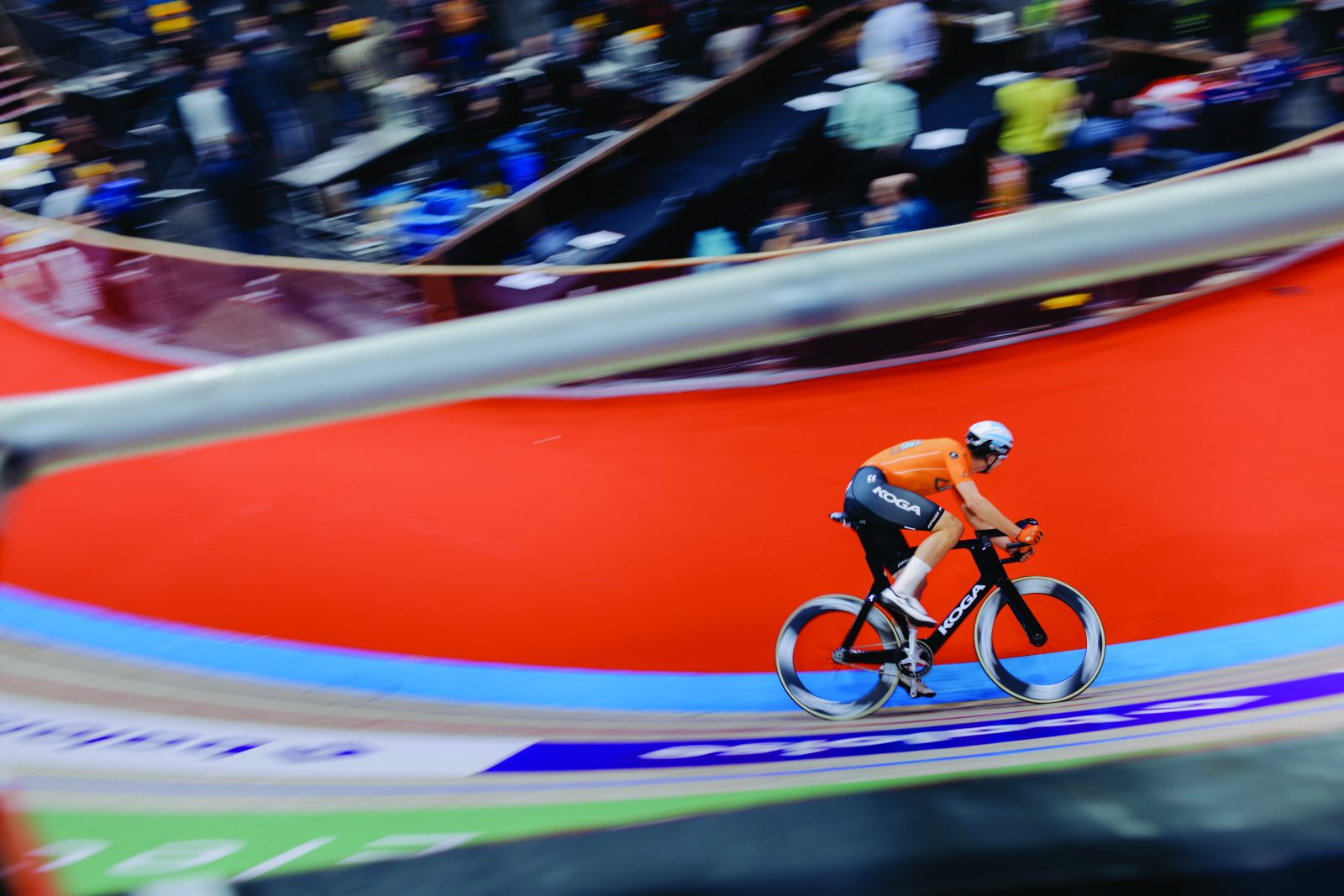
‘It’s nuts,’ Nilsson-Julien says. ‘Last night there were… I don’t know how many people cheering for us.
I don’t think any race is like this. With a club in the middle.’ Yeah, about that…
144-hour party people
For all that the riders are the stars, and the bike racing the nominal attraction, the sporting contest is really only half the story behind Ghent’s reputation. Maybe less.
It was ‘the other side’ of the Six Day that helped Swann persuade his somewhat less cycling obsessed partner that it would be a suitable way to spend her birthday weekend.
‘It’s not just about track cycling, it’s more about the atmosphere,’ he had told her.
The racing infrastructure, made up of the rider cabins, timing platform, press box and mechanics’ workshop, takes up at most a third of the track centre.
The lion’s share is given over to ‘the party’, which is unlike any you’ve ever attended.
Even someone completely unfamiliar with the sport could figure out that the inside of a track is a less-than-perfect vantage point from which to follow a race, at least without succumbing to dizziness.
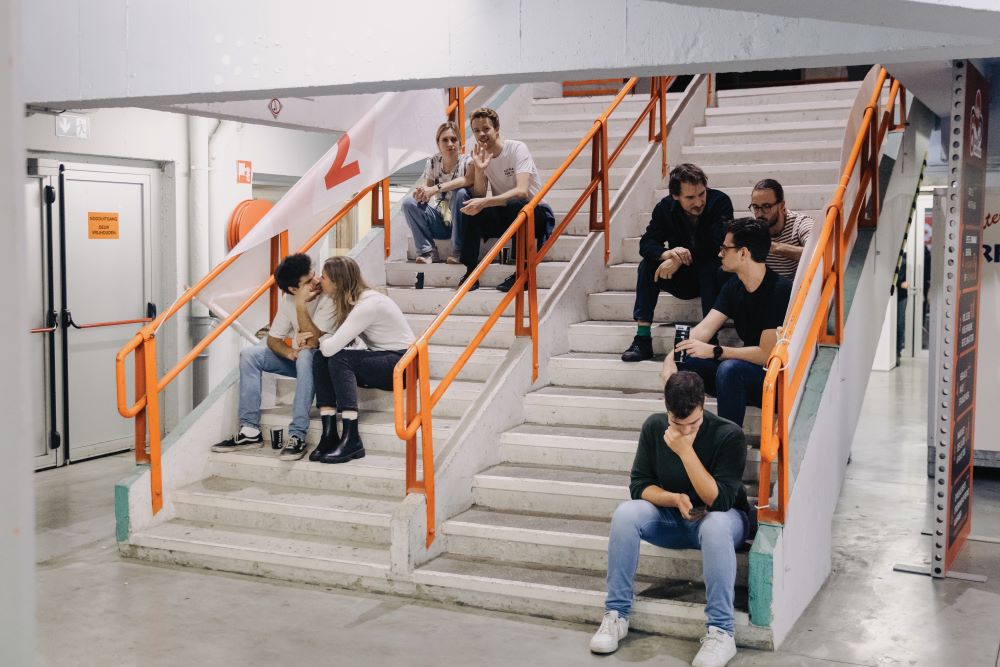
Rest assured that’s a feature rather than an error.
If you were to temporarily lose your eyesight, you’d probably be able to tell exactly where you were in relation to the bar by the stickiness of the carpet and the relative pungency of the stale beer.
Another key ingredient, the musical accompaniment, is supplied not by an internationally renowned local name like Soulwax, but by a DJ whose Instagram profile offers his services to anyone hosting a ‘wedding, birthday or staff party’.
DJ Frans knows exactly what the crowd wants, which is to say big house beats (with or without oompah), electro covers of Phil Collins and the greatest of singalong-suitable floorfillers.
‘L’Amour Toujours’ by the unfathomably popular Gigi D’Agostino is just one track from Frans’ Saturday night set that delights his public.
Halfway through the programme there is a 20-minute break in the racing.
The house lights (which have been excessively up all evening) are lowered, and the audience is treated to a live(ish) performance by early 2000s outfit Lasgo.
Vocalist Evi Goffin parades the edge of the track belting out their biggest hit, ‘Something’, entirely bemused by the whole occasion.
Eventually the racing resumes with the fourth of four opportunities for the women across the week.
An eardrum-bursting chant of ‘Oh, Lotte Kopecky’ erupts when the World Road, Elimination and Points champion seals her second comfortable victory in as many days.
That Kopecky elicits easily the most rapturous response of the night is evidence that the audience, for all their pale maleness, would be receptive to the organisers building more women’s racing into the bill.
One for the road
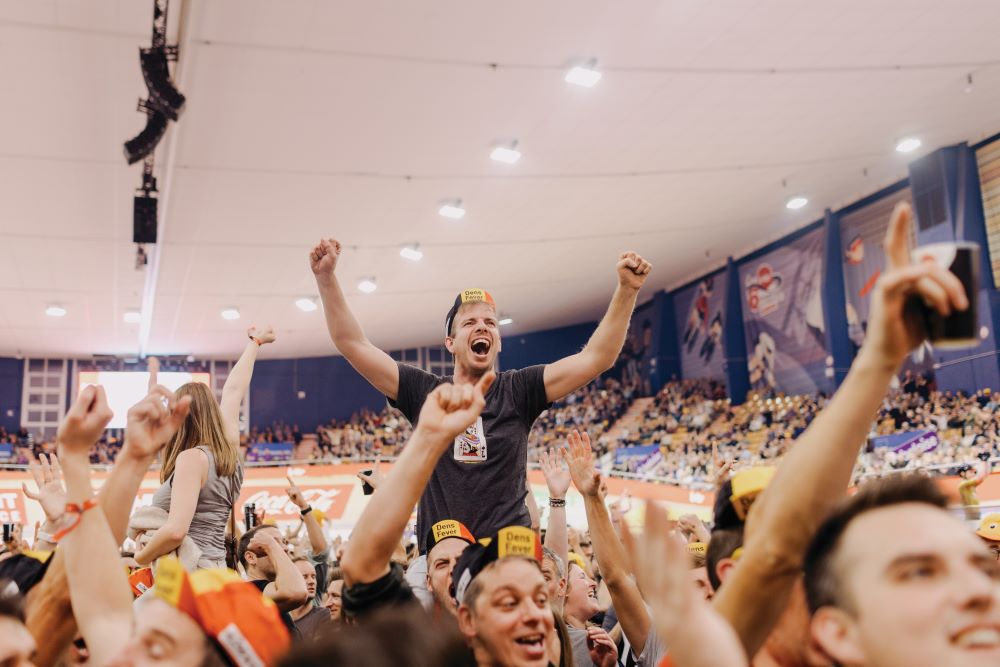
The men return to the stage for the night’s headline performance, a 40-minute Madison chase that is almost as exhausting to watch as it is to ride.
The race reaches its climax as the hour approaches 1am.
If you’d imagine energy levels in the middle to be somewhat diminished, you have not reckoned with the stimulative power of ‘Sweet Caroline’.
After DJ Frans brings the house down with ‘Livin’ on a Prayer’, the many who have gone the distance stagger towards the exits.
They have just enough left in the tank for one final collective cry in celebration of Iljo Keisse.
The Six Days of Ghent may not be high culture, but it is, in its own way, every bit a work of art.
Getting the formula right
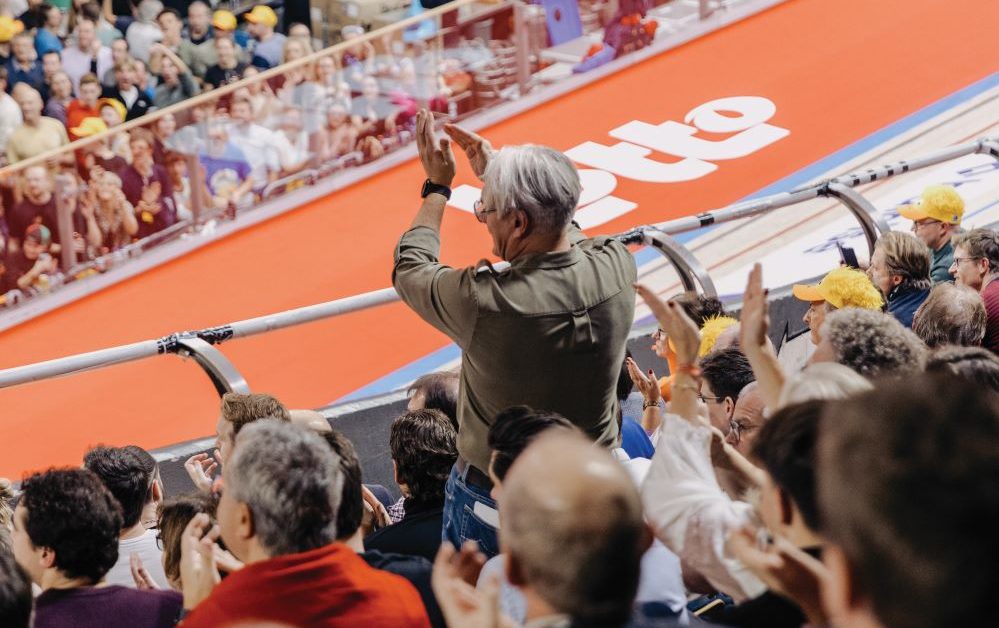
The general director of the Ghent Six on how he keeps the event fresh every year
The Six Days of Ghent is built on foundations of tradition, nostalgia and an active appreciation for its own history, helping to make it a bucket-list attraction for cycling fans.
At the same time, Christophe Impens, general director of the event and head of cycling at Golazo Sports, says that rather than being stuck in the past, ‘as an organiser you have to innovate every year’.
He tells Cyclist, ‘After every event we ask ourselves, “What are the five things we would like to change?”’ One example is the switch from single-use plastic to reusable drinks cups: ‘Every evening it used to be a huge garbage pit, half a metre high of plastic beer cups on the inner circle. This year there was no waste at all.’
Other changes include the introduction of a ‘Six Days for Dummies’ big screen explainer of the complicated Madison format, as well as paracycling The general director of the Ghent Six on how he keeps the event fresh every year Getting the formula right events and an expansion of the increasingly popular women’s programme.
‘The roof went off when we presented Lotte Kopecky on Friday and Saturday,’ Impens says.
He sums up the Six Day’s appeal as ‘a combination of world class sports and typically Flemish ambience’, and rejects the accusation, made by De Morgen newspaper columnist Hans Vandeweghe, that the event ‘adds nothing to the top sport of track cycling’.
Impens points to the fact that after one victory, Madison World Champion Jan Willem van Schip ‘could barely stand on his feet during the victory ceremony’.
For Impens, though, the proof of the format is in the ticket receipts – the first batch for 2024 sold out within 24 hours.
To get your tickets go to lottozesdaagse.be/en
